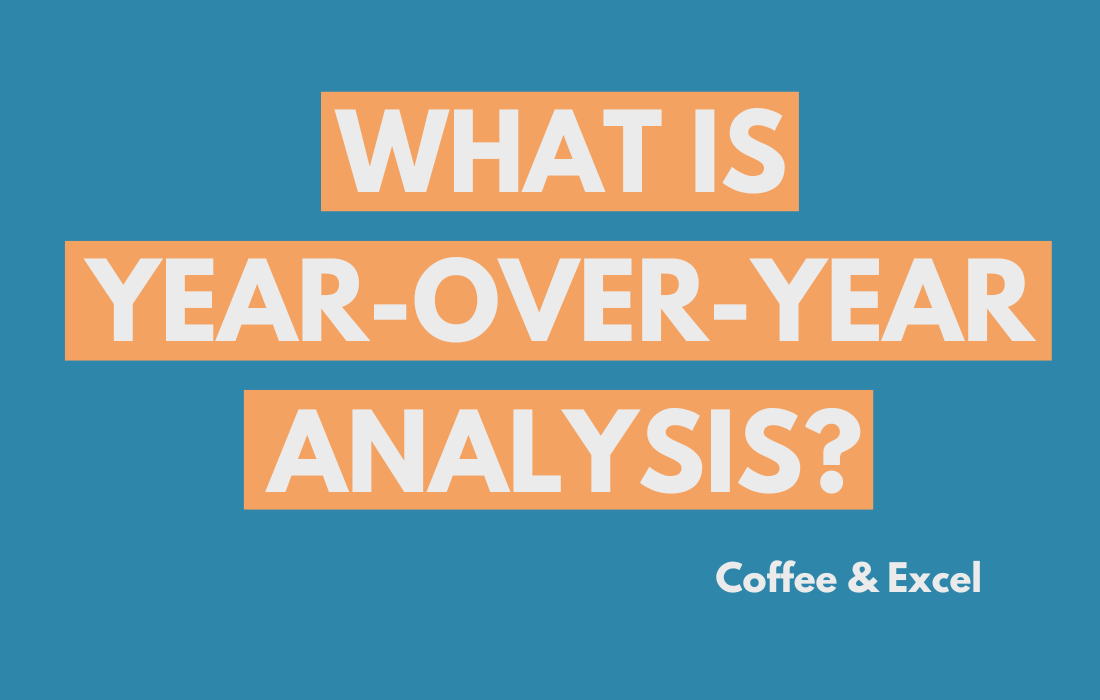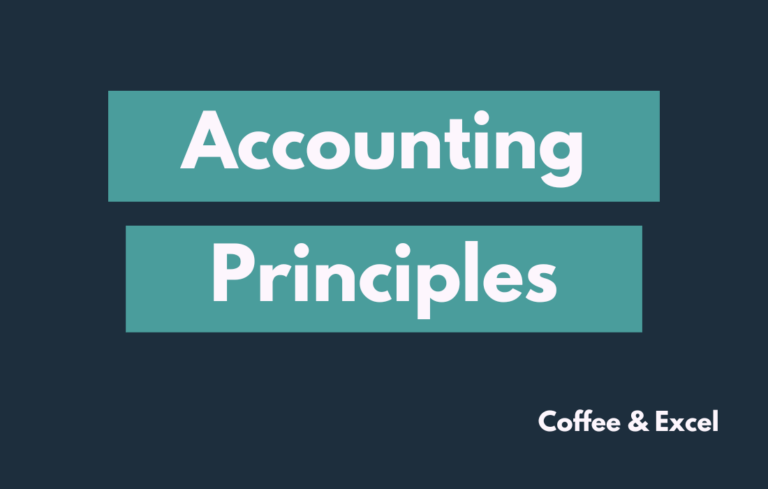What is Year-over-Year (YoY) Analysis?

Introduction
Welcome to our exploration of a powerful tool in the financial analysis toolbox: Year-over-Year (YoY) Analysis. Often perceived as a jumble of letters, this technique can help bring order to the apparent chaos of financial data. Unscrambling the ‘YoY’ gives us ‘Year over Year’, a comparison method that offers businesses and investors critical insights into performance trends. This blog demystifies YoY analysis, revealing its capacity to transform raw numbers into meaningful narratives about growth, profitability, and economic health. So, let’s delve into the world of YoY analysis and unlock its potential for your financial decision-making journey.”
TLDR
- YoY Analysis: Year-over-Year (YoY) analysis is a financial tool that compares business performance across different years.
- Importance: YoY analysis is crucial in identifying trends, growth patterns and aiding in strategic business decisions.
- Handling Seasonality: YoY analysis effectively addresses the issue of seasonality in business, providing a more accurate reflection of business performance.
- Common Financial Metrics: Several financial metrics are typically assessed in YoY analysis, including sales revenue, cost of goods sold (COGS), and net income.
- Economic Indicators: YoY analysis can evaluate various economic indicators such as inflation, unemployment, GDP, and interest rates.
- Alternatives: Other time-series data analysis methods exist, such as month-over-month, quarter-over-quarter, and year-to-date comparisons, which can serve as alternatives to YoY analysis.
Definition of Year-over-Year (YoY) Analysis
In the alphabet soup of financial terminology, ‘YoY’, ‘Year over Year’ is a particularly potent ingredient. But what does this term signify in the context of financial analysis? Let’s unscramble it to unearth its meaning.
Year-over-Year (YoY) analysis, at its core, is a method used to compare the performance of a business or economic indicator from one period to another, typically on an annual basis. By comparing data from corresponding periods year-over-year, we can understand growth trends, recognize patterns, and gauge performance over time.
To paint a clearer picture, let’s dive into an example. Suppose a company’s revenue in 2022 was $1.2 million; in 2023, it rose to $1.5 million. To calculate the YoY growth rate, we would subtract the prior year’s revenue from the current year’s revenue, divide the result by the preceding year’s revenue, and then multiply by 100 to get a percentage. So, the calculation would look like this:
YoY Growth Rate = (($1.5 million – $1.2 million) / $1.2 million) * 100 = 25%
This means the company’s revenue grew by 25% from 2022 to 2023.
This simple yet powerful calculation allows businesses and investors to track performance, identify trends, and make informed decisions based on historical data. In the following sections, we will further explore the various applications and nuances of YoY analysis, demonstrating how this tool can decipher the scrambled puzzle of financial data.”
Importance of Year-over-Year Analysis
Having unscrambled the definition and calculation of Year-over-Year (YoY) analysis, we now focus on its importance in financial analysis. The value of YoY analysis is not just about understanding the past; it’s about illuminating the future.
The first significant benefit of YoY analysis is its ability to reveal trends that might be hidden in a single year’s data. By comparing performance across multiple years, businesses and investors can spot patterns that indicate whether performance is improving, deteriorating, or remaining stable. These trends are pivotal in forecasting future performance and making strategic decisions.
Secondly, YoY analysis allows for a fair comparison by accounting for seasonal variations. Many businesses experience fluctuations throughout the year due to holidays, weather, and other cyclical factors. By comparing the same periods in different years (for example, Q3 2023 vs Q3 2022), we ensure we’re comparing apples to apples, not apples to oranges.
Lastly, YoY analysis provides a clear and concise way to communicate performance to stakeholders. Percentages derived from YoY calculations are easy to understand and offer a straightforward measure of success or improvement.
Let’s illustrate this with an example. Suppose a company reported a 15% YoY increase in net profit for the fiscal year 2023. This single figure instantly communicates to shareholders, investors, and employees that the company has improved its profitability compared to the previous year. It’s a simple yet powerful way to share a story of growth or change.
In the scrambled world of financial data, YoY analysis stands as a decoder, providing clarity and insight into business performance. As we delve deeper into this topic, we’ll explore how to leverage this tool across various financial metrics and economic indicators.”
Year-over-Year Analysis and Seasonality
Now that we understand the essential components of Year-over-Year (YoY) analysis, let’s delve deeper into one of its key applications: seasonality.
Seasonality refers to the predictable and recurring fluctuations in business data over a year. These variations can be due to various factors, such as weather, holidays, and consumer behaviour. For instance, a retailer may see sales spike during the holiday season and then drop off in the subsequent months. Looking at month-to-month data in such cases could present a misleading picture of the business’s overall health.
This is where the power of Year-over-Year analysis comes to the forefront. By comparing data from the same periods in different years (for example, December 2023 vs December 2022), we can neutralize the impact of seasonal variations and focus on the true underlying trends. This gives us a clear, apples-to-apples comparison that isn’t skewed by seasonality.
To illustrate, consider an ice cream shop that experiences a surge in sales every summer. We might see a significant increase if we compare July’s sales to June’s. But does this mean the business is growing? Not necessarily. It could result from the seasonal trend of more people buying ice cream in July. A better comparison would be July 2023 vs July 2022. This YoY comparison will give us a clearer understanding of whether the business is genuinely growing or is simply riding the wave of seasonal demand.
In summary, YoY analysis serves as the decoder ring. It lets us separate the signal from the noise, offering a clearer picture of the underlying performance trends.”
Common Year-over-Year Financial Metrics
“As we continue our journey to decode the complexities of Year-over-Year (YoY) analysis, we now turn our attention to the practical application of this tool. Let’s uncover the most commonly used financial metrics that can be analyzed using the YoY approach.
- Sales Revenue: By comparing sales revenue on a YoY basis, businesses can identify sales growth or contraction trends. This can help inform future sales strategies and forecasts.
- Cost of Goods Sold (COGS): YoY analysis of COGS can reveal how effectively a company manages its direct costs over time. This can be particularly useful in industries with fluctuating material costs.
- Selling, General & Administrative Expenses (SG&A): Changes in SG&A on a YoY basis can indicate how well a company controls its overhead costs.
- Earnings Before Interest, Taxes, Depreciation, and Amortization (EBITDA): This metric provides a proxy for a company’s operating profitability. YoY changes in EBITDA can provide insights into how a company’s core business operations are performing over time.
- Net Income: This is the bottom line for a business. A YoY analysis of net income can provide a clear indication of a company’s overall profitability trends.
- Earnings Per Share (EPS): For publicly traded companies, YoY changes in EPS can be vital to investors as it shows how much of a company’s profits are allocated to each outstanding share of common stock.
These are just a few examples of the many financial metrics that can benefit from YoY analysis. By regularly comparing these metrics year-over-year, businesses and investors can gain valuable insights into performance trends and make more informed decisions. In the next part, we will explore how YoY analysis can be applied to key economic indicators.
Common YoY Economic Indicators
As we continue to decrypt the Year-over-Year (YoY) analysis puzzle, it’s time to expand our scope beyond individual companies and examine the broader economic landscape. YoY analysis isn’t just a tool for business metrics—it’s also a powerful way to track and understand macroeconomic trends. Let’s delve into some of the most common economic indicators that are often examined using a YoY approach:
- Inflation: Inflation represents the rate at which the general level of prices for goods and services is rising. YoY analysis of inflation rates can provide insights into how purchasing power changes over time, which can have significant implications for economic policy and investment strategies.
- Unemployment Rates: YoY changes in unemployment rates can provide a clear picture of job market trends, offering valuable insights for policymakers, businesses, and job seekers alike.
- Gross Domestic Product (GDP): GDP measures the total value of goods and services produced by a country. Economists can gauge an economy’s health and growth trends by analyzing GDP on a YoY basis.
- Interest Rates: Central banks worldwide adjust interest rates to manage economic growth and inflation. YoY analysis of interest rates can help investors understand the direction of monetary policy and make more informed investment decisions.
These are just a few economic indicators that can be analyzed year-over-year. By using the YoY approach, economists, policymakers, and investors can gain a deeper understanding of the underlying trends in these indicators, which can help guide economic policy and investment strategy. In the next part of our blog, we will explore some alternatives to YoY analysis.”
Alternatives to YoY Analysis
Having navigated the depths of Year-over-Year (YoY) analysis, it’s important to remember that while YoY is a handy tool for understanding trends over time, it is not the only approach available.
Other types of analysis might be more appropriate depending on the specific situation and the type of data being examined. Let’s explore some of these alternative methods:
- Month-over-Month (MoM): This type of analysis compares data from one month to the next. It can help identify short-term trends or industries with rapid changes. Still, it may be influenced by seasonal factors.
- Quarter-over-Quarter (QoQ): QoQ analysis compares data from one quarter to the next. This can be useful in business and economic analysis, where quarterly reporting is standard.
- Year-to-Date (YTD): YTD analysis compares data from the current year’s start up to the present day. This can provide a valuable snapshot of performance or progress during the current year.
- Compound Annual Growth Rate (CAGR): CAGR is used to determine an investment’s mean annual growth rate over a period longer than one year. It represents one of the most accurate ways to calculate the return for anything that can rise or fall in value over time.
Each method has its advantages and can be more or less valuable depending on the situation. The key is to understand the strengths and weaknesses of each approach and choose the one that best fits the data and the questions you’re trying to answer. In the final part of our blog, we will put our knowledge into action with an example of YoY analysis.”
Example: YoY Analysis in Action
To truly understand the practicality and effectiveness of Year-over-Year (YoY) analysis, there’s no better method than seeing it in action. This section presents a hypothetical case study demonstrating how YoY analysis can be applied in a real-world scenario.
Imagine a tech startup, TechNovel Inc., which has operated for several years. The management team wants to assess the company’s growth and performance. They decide to use YoY analysis to compare key metrics from the last fiscal year to those of the previous one.
The team looks at sales revenue, one of the most direct indicators of a company’s performance. In Year 1, TechNovel had a total sales revenue of $500,000. In Year 2, sales revenue increased to $650,000. The team calculates a 30% YoY growth in sales revenue using the YoY formula.
The team doesn’t stop there. They conduct a YoY analysis on other critical financial metrics such as Cost of Goods Sold (COGS), SG&A expenses, EBITDA, Net Income, and Earnings Per Share (EPS). Each metric provides a different perspective on the company’s performance and financial health.
On the economic front, the team looks at YoY changes in relevant economic indicators, such as inflation and interest rates, which could impact the company’s cost of capital and pricing power.
While this is a simplified example, it demonstrates the utility of YoY analysis in understanding a company’s growth and identifying trends. It also shows how YoY analysis can be complemented by other forms of research to provide a more comprehensive view of a company’s performance.
Conclusion
As we wrap up our exploration of Year-over-Year (YoY) Analysis, it’s clear to see the power and utility that this simple yet effective tool brings to the table. Whether you’re a business owner monitoring the health of your enterprise, an investor seeking promising opportunities, or an economist analyzing the fluctuations of economic indicators, YoY analysis provides invaluable insights into trends, growth patterns, and the overall trajectory of a given data set.
However, it’s crucial to remember that no analytical tool should be used in isolation. As we discussed, alternatives such as Month-over-Month (MoM), Quarter-over-Quarter (QoQ), and Year-to-Date (YTD) analyses each have their place. They can offer additional perspectives on your data. The choice of analysis method should be guided by the nature of your data, the context of the analysis, and the specific questions you’re seeking to answer.
In the end, the goal of YoY Analysis, like any other form of financial or economic analysis, is to help us make better, more informed decisions. By understanding the past and the present, we can anticipate the future more accurately and prepare for it more effectively.

